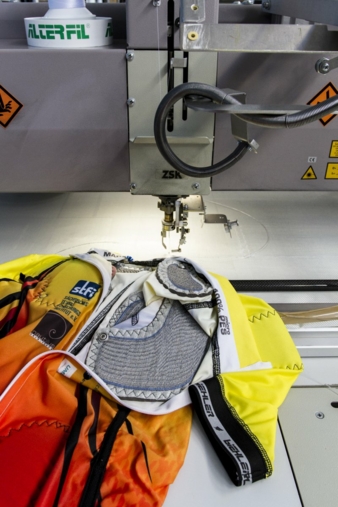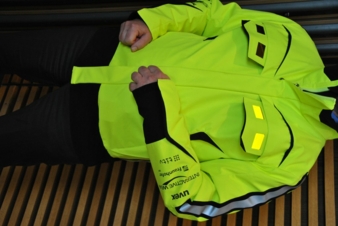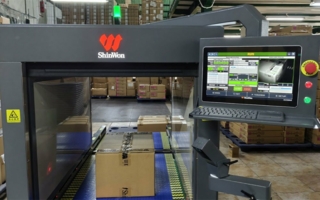18/12/2017 – Wearables — auf Deutsch lesen
Revolution in the fashion industry
By as early as 2021 it is expected that some 18 million items of intelligent clothing, also known as ‘wearables’, will be sold.
By 2021, 237.5 million wearables are expected to be produced. Fabrics that can measure our heart rate, body temperature or stress levels – and can react accordingly – have long been far more than mere pie in the sky.
The digital revolution is noticeable in all areas of life and is causing widespread change, such as the growth of what are known as ‘wearables’. Wearables are electronic technologies and computers that can be incorporated into items of clothing and worn; one characteristic is that they are directly connected to the internet, which means they are in a position to exchange data.
They enable a new form of ‘human/machine interaction’ with a virtually inexhaustible range of possible applications. They are revolutionising our use of digital technology with examples such as smart shirts – intelligent accessories or medical products that can actually save lives. Most importantly, by adding to the wearer’s awareness of health and mobility, they improve safety in daily life and at work, as they can alert the user to risks and help in optimising working processes. This is thus a promising and exciting new technology that will play an ever greater role in an increasingly networked world.
In spite of their great potential specifically in the field of clothing, however, wearables and smart textiles have not yet moved beyond the early development phase. The reason for this is that a huge range of different elements in industry and science need to work cooperatively to implement new ideas successfully and bring them to market.
As a result, the market in Germany is still relatively small, notably in comparison with the American market. Nonetheless, continued growth in the market is forecast, including here at home. This year, for example, has seen the production of 131.7 million wearables, a figure that is expected to grow to 237.5 million by 2021.
Examples demonstrate that we are in the midst of radical change and that it is only a matter of time before these new products establish themselves as a ubiquitous part of our lives. Conductive yarns, for example, are now being used to produce illuminated clothing, which can contain up to 625 lighting elements per metre. “That is an absolute maximum,” explains Sabine Gimpel of the Thüringen-Vogtland Textile Research Institute (TITV). “To keep the yarn supple, 150 elements is more realistic.” With this technology, T-shirts can be transformed into illuminated advertising spaces. Other examples that illustrate the range of applications include an armband with an integral emergency alarm function for older people, and a headset that relays vital parameters and provides technical assistance to dementia patients. Such networked intelligence thus represents a paradigm shift, replacing the classic, mono-purposed electronic hand-held device with opportunities for new, integrated technology.





